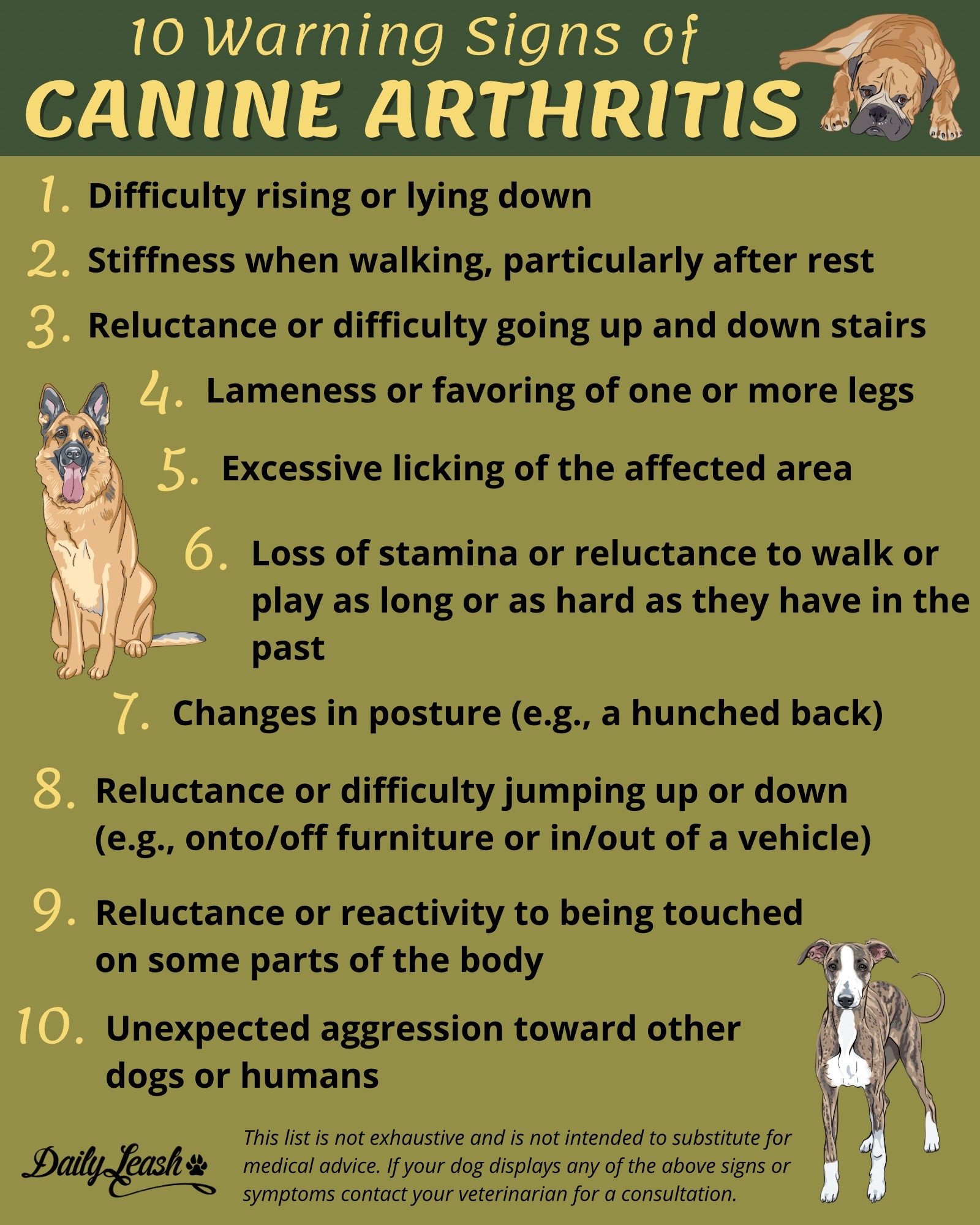Of all the things we share with our pets, arthritis pain may be one of the most common — it turns out, dogs are just as susceptible to inflammation and degeneration of their joints as their humans. According to the Centers for Disease Control 24% of adult humans live with arthritic pain; the number of dogs that suffer with discomfort due to arthritis is likely the same, or even higher. While it is commonly noted that 20% of dogs, or 1 in every 5 over the age of one, will develop arthritis; many veterinarians believe this number is widely underestimated due to lack of awareness, diagnosis, and reporting. There is currently no cure for this debilitating disease, making preventative measures and awareness of signs and symptoms all the more imperative. Early diagnosis and treatment are key to keeping our pets living their best lives for as long as possible.

As with humans, the most common type of arthritis in dogs is Osteoarthritis (OA). There are many factors involved in the development of OA, as noted by VCA Animal Hospitals, including:
-
- Body conformation (how an animal is built)
- Body condition/weight (being overweight or obese is highly correlated with OA)
- Abnormal joint development (e.g., hip dysplasia, elbow dysplasia, luxating patellas)
- Activity history
- Injury history (e.g., past fracture, ligament damage, muscle injury, joint infection)
- Orthopedic surgery
- Nutritional history
The good news is, knowing the contributing factors to the development and progression of this painful illness can help us prevent or delay the onset and mitigate the impact if or when the disease develops. There are many things pet owners can do from day one to help their four-legged friends, including:
-
- Carefully selecting a reputable breeder
- Working with your veterinarian to determine your puppy’s ideal diet and a spay/neuter plan to ensure a slow and steady growth rate
- Maintaining a healthy weight and lean body condition in your dog throughout their life, through proper diet and exercise
- Making yourself aware of signs and symptoms, since growth abnormalities and injuries cannot always be avoided or predicted and, in the case of a rescue, may not even be known
Early diagnosis and treatment are our greatest weapons against canine arthritis and are pivotal to managing both the pain and progression of the disease (AVMA). Possible signs your dog may be struggling with joint pain include:
-
- Difficulty rising or lying down
- Stiffness when walking, particularly after rest
- Reluctance or difficulty going up and down stairs
- Lameness or favoring of one or more legs
- Excessive licking of the affected area
- Loss of stamina or reluctance to walk or play as long or as hard as they have in the past
- Changes in posture (e.g., a hunched back)
- Reluctance or difficulty jumping up or down (e.g., onto/off furniture or in/out of a vehicle)
- Reluctance or reactivity to being touched on some parts of the body
- Unexpected aggression toward other dogs or humans
Dogs do not always display pain signals in the way we humans might expect. You know your dog better than anyone. If your pet develops any of the above signs or symptoms, or if you have any other concerns, reach out to your veterinarian for a consultation and to form a treatment plan. While we humans may share the propensity for arthritis with our pets, we have singular ownership in ensuring they lead the happiest and healthiest lives possible.

